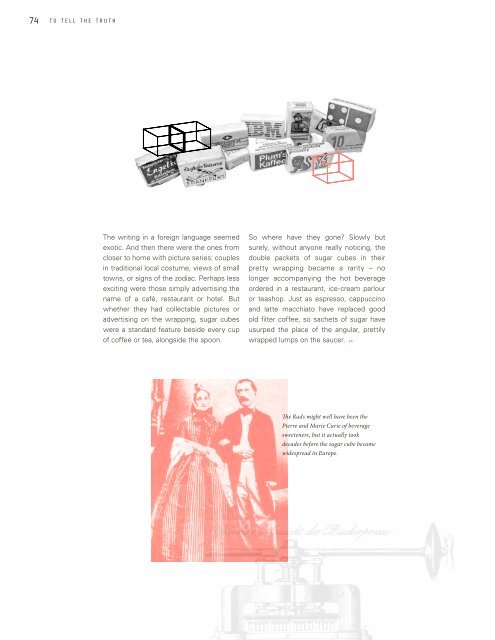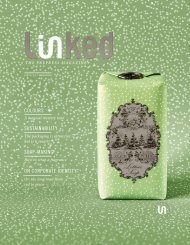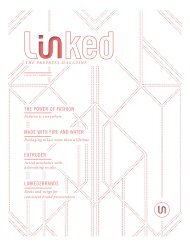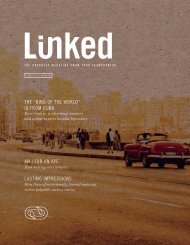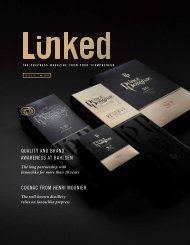Janoschka magazine Linked_V8_2023
The customer magazine by Janoschka and Linked2Brands.
The customer magazine by Janoschka and Linked2Brands.
Create successful ePaper yourself
Turn your PDF publications into a flip-book with our unique Google optimized e-Paper software.
74<br />
t o t e l l t h e t r u t h<br />
issue #8 ©<br />
l i n k e d<br />
75<br />
A 150-YEAR-OLD<br />
SUCCESS STORY<br />
The writing in a foreign language seemed<br />
exotic. And then there were the ones from<br />
closer to home with picture series: couples<br />
in traditional local costume, views of small<br />
towns, or signs of the zodiac. Perhaps less<br />
exciting were those simply advertising the<br />
name of a café, restaurant or hotel. But<br />
whether they had collectable pictures or<br />
advertising on the wrapping, sugar cubes<br />
were a standard feature beside every cup<br />
of coffee or tea, alongside the spoon.<br />
So where have they gone? Slowly but<br />
surely, without anyone really noticing, the<br />
double packets of sugar cubes in their<br />
pretty wrapping became a rarity – no<br />
longer accompanying the hot beverage<br />
ordered in a restaurant, ice-cream parlour<br />
or teashop. Just as espresso, cappuccino<br />
and latte macchiato have replaced good<br />
old filter coffee, so sachets of sugar have<br />
usurped the place of the angular, prettily<br />
wrapped lumps on the saucer.<br />
How on earth did this come about? Invented<br />
in 1842, sugar cubes were an unadulterated<br />
success story for the next 150 years – right<br />
up until the 1990s when sugar manufacturers<br />
saw their sales fall dramatically. Before the<br />
invention of sugar cubes you could only buy<br />
sugar in so-called sugar cones (or sugar loafs).<br />
These bore little resemblance to today’s packaged<br />
sugar. They were rock-hard blocks, some<br />
of them the size of a small child, carefully<br />
stored in the larders of middle-class housewives.<br />
It took a hammer and chisel to break<br />
off small pieces, which were then served in<br />
little tins with coffee or tea. There’s a story<br />
that Juliane Rad, wife of the director of a sugar<br />
factory in what is now in the Czech Republic,<br />
injured her finger while engaged in this arduous<br />
task. This prompted her to come up with<br />
the not so far-fetched idea of producing sugar<br />
in smaller portions, which she then presented<br />
to her husband, Jacob Christoph Rad. He, in<br />
turn, invented a machine that compressed<br />
ground, still moist sugar into small rectangular<br />
moulds. Once the sugar had dried, out came<br />
the world’s first-ever sugar cube. Rad recognised<br />
the potential of his invention and in 1843<br />
had it patented. Local consumers loved the<br />
new “tea sugar” and “Viennese cubed sugar”.<br />
Rad sold his patent to sugar factories all over<br />
Europe. What happened after that is a classic<br />
example of European cooperation.<br />
The Rads might well have been the<br />
Pierre and Marie Curie of beverage<br />
sweeteners, but it actually took<br />
decades before the sugar cube became<br />
widespread in Europe.<br />
By the 1800s, stores sold sugar already broken up<br />
into random-size pieces. But these chunks could<br />
be inconvenient at teatime.


